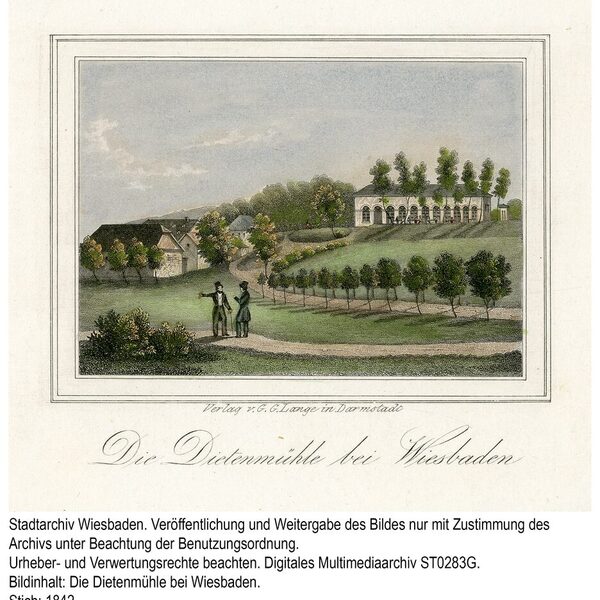Dietenmühle
The Dietenmühle probably dates back to a mill mentioned in the Sonnenberg valley in 1356 and 1490 and is named after the miller Heinz Diet, who was mentioned in 1509. In 1832, an inn was built in the immediate vicinity, and in 1861 the Dietenmühle was converted into a cold-water sanatorium. A sanatorium was built until 1863, where Duke Adolph zu Nassau, among others, cured his headaches. In the following years, the property developed into a popular destination with 100 guest rooms, a café-restaurant and a milk spa.
Under changing ownership, the Dietenmühle was eventually run as a sanatorium for nervous patients until 1927, when the town bought the buildings and set up a retirement home. The restaurant with café and milk spa existed until 1942.
Initially put back into operation after the Second World War, some of the historic buildings had to be demolished in the mid-1950s due to dilapidated building fabric, despite protests. The Hessian Ministry of Finance moved into the remaining former Kaltwasseranstalt. In the 1970s, an office complex was built on the site, which was demolished a few decades later.
Following extensive construction and renovation work, apartments and offices were built in 2010 in the only remaining listed brick building at what is now Parkstrasse 44.
Literature
Fischer-Dyck, Marianne: The Dietenmühle. Wiesbadener Leben 8/1977 [p. 11 f.].
Spiegel, Margit: Wiesbadener Firmenbriefköpfe aus der Kaiserzeit 1871-1914. Fabrik- und Hotelansichten auf Geschäftsschreiben und Rechnungen. 50 examples with brief company portraits, vol. 1, Wiesbaden 2003 [p. 52 ff.].
Collection of newspaper clippings from the Wiesbaden City Archives, "Dietenmühle".
